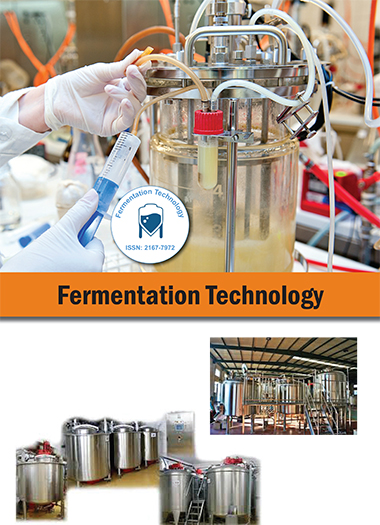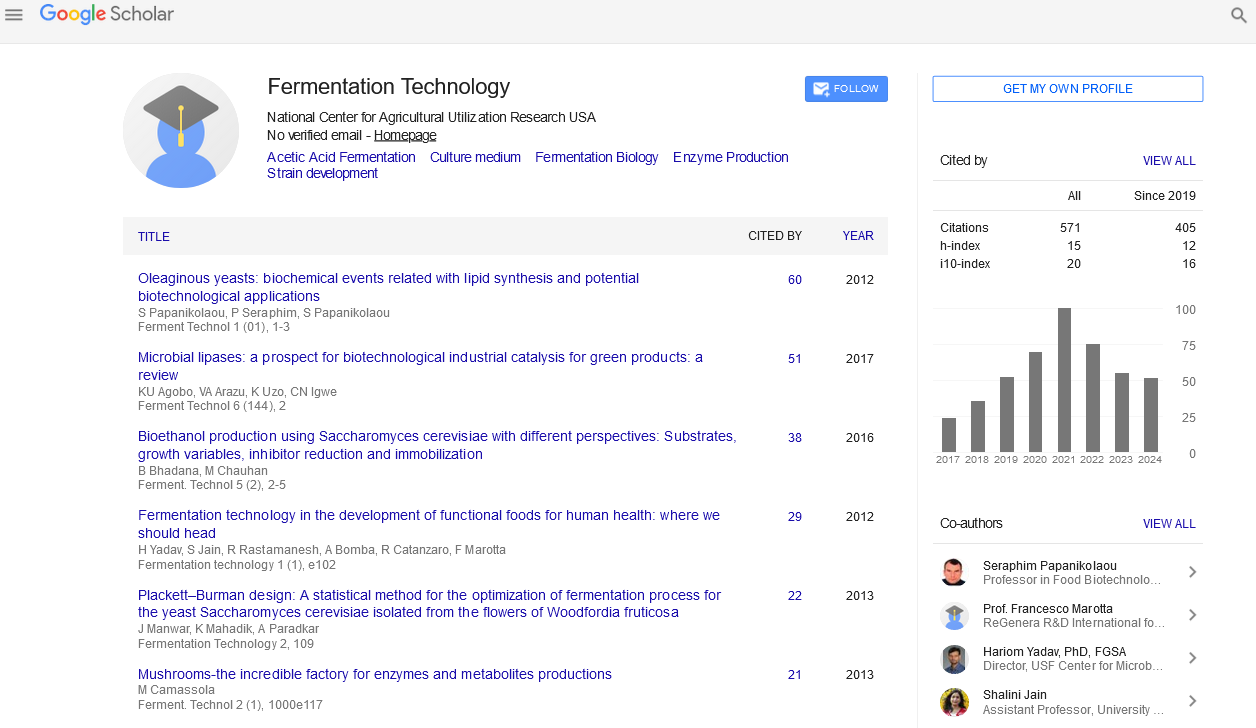Indexed In
- Open J Gate
- Genamics JournalSeek
- Access to Global Online Research in Agriculture (AGORA)
- RefSeek
- Hamdard University
- EBSCO A-Z
- OCLC- WorldCat
- Publons
Useful Links
Share This Page
Journal Flyer

Open Access Journals
- Agri and Aquaculture
- Biochemistry
- Bioinformatics & Systems Biology
- Business & Management
- Chemistry
- Clinical Sciences
- Engineering
- Food & Nutrition
- General Science
- Genetics & Molecular Biology
- Immunology & Microbiology
- Medical Sciences
- Neuroscience & Psychology
- Nursing & Health Care
- Pharmaceutical Sciences
Behavior of plant growth promoting bacteria in tomato rhizosphere: Colonization of rhizosphere as influenced by PGPR and root exudates composition
World Congress on Beneficial Microbes: Food, Pharma, Aqua & Beverages Industry
August 25-27, 2015 Valencia, Spain
Ameen Al-Ali, Francois Krier and Philippe Jacques
Universit√?¬?√?¬© Lille 1 Sciences et Technologie, France
Posters-Accepted Abstracts: Ferment Technol
Abstract:
Plant growth promoting bacteria (PGPR) are an indispensable part of rhizosphere biota that when grown in association with the host plants can stimulate the growth of the host. PGPR promote plant growth directly by either facilitating resource acquisition (nitrogen, phosphorus and essential minerals) or modulating plant hormone levels, or indirectly by decreasing the inhibitory effects of various pathogens on plant growth and development in the forms of biocontrol agents. Different strains of B.subtilis and B.amyloliquefaciens among PGPR produce different non-ribosomal peptides such as cyclic lipopeptides. Surfactin, Fengycin and Iturin are cyclic lipopeptides produce by B.subtilis, and B. amyloliquefaciens, they play an important role in the rhizosphere to suppress the plant pathogens and thus, it improves the relationship between PGPR and host plant. The colonization is the most important criterion to PGPR and it influences by different factors: plants species, PGPR and their lipopeptides production, rhizosphere conditions, and root exudates and their compositions. At this work, we highlighted to study the effect of root exudates, and some of their compositions on the rhizosphere colonization, in addition, to study the surfactin role on this criterion. Two strains, B.subtilis BBG131, and B.amyloliquefaciens FZB42 were chosen to evaluate their behavior in the rhizosphere and their growth in the root exudates and some of carbon sources found in root exudates. B.subtilis BBG131 produces only surfactin and B.amyloliquefaciens produces three lipopeptides families: Iturin, Fengycin, and Surfactin. The results showed a significant different in bacterial growth between B.amyloliquefaciens and B.subtilis. Glucose, sucrose and maltose were the best carbon sources for B.amyloliquefaciens FZB42. In all carbon sources the final biomass of B.subtilis BBG131 was less than with B.amyloliquefaciens FZB42. There was no growth of B.subtilis BBG131 with fumaric acid. Root exudates showed the ability to induce bacterial growth for two strains studied. B.amyloliquefaciens FZB42 indicated a high ability to colonize the tomato rhizosphere while the surfactin production was low. A contrary results present by B.subtilis BBG131, the rhizosphere colonization was very low, while the surfactin production was a high.

